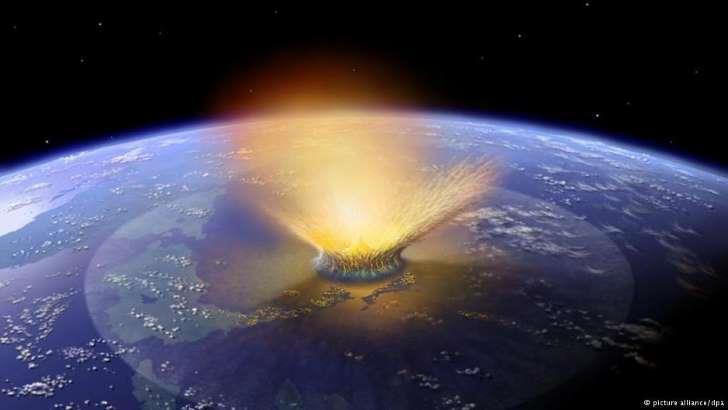March 24, 2015
The newly discovered crater in the Warburton Basin in central Australia measures over 400 kilometers in diameter – pushing South Africa's Vredefort Crater into second place with a comfortable margin of 100 kilometers.

March 24, 2015
The newly discovered crater in the Warburton Basin in central Australia measures over 400 kilometers in diameter – pushing South Africa's Vredefort Crater into second place with a comfortable margin of 100 kilometers.

A team of geophysicists around lead researcher Dr. Andrew Glikson of ANU School of Archaeology and Anthropology came across the world's largest known impact zone by chance, following a drilling two kilometers below the earth as part of geothermal research.
The drill core contained traces of rocks that had been turned to glass by extreme temperature and pressure.
So Glikson took a closer a look.
He used three-dimensional microscopy as well as transmission electro-microscopy to measure the structures in the quartz and detected Miller indices in the samples.
Miller indices are unique crystallographic orientations of planar deformation features (PDF) in quartz that form under shock pressures greater than 8 GPa.
"We found shock pressures that were larger than 10-20 GPa. This means by definition that this shock metamorphism could not occur within the earth, e.g. from volcanoes or earthquakes. It had to be induced by an asteroid," Glikson told DW.
The findings suggested more than a run-of-the-mill asteroid.
Only a mega asteroid exceeding 10-20 kilometers in diameter has the potential for shock pressures of 10-20 GPa, says Glikson.
Magnetic modeling of the deep crust in the area traced out bulges deep within our planet – the crust being about 30 kilometers thick in this particular area.
"We found two huge deep domes, formed by the Earth's crust rebounding after the huge impacts, and bringing up rock from the mantle below. This is a very strong indication of the elastic rebound effect following an impact," Glikson says.
All this suggests the crater was left by a vast asteroid that most likely split into two just before impact.
The twin asteroids were each larger than 10 kilometers and hit Earth so long ago the crater has since been covered by more than two kilometers of sediment, leaving no sign of it on the surface.
But when exactly did this happen?
Tricky timing
The age of ancient rock samples can be determined with a deviation of 1 million years – give or take.
So far Glikson's research suggests the twin-asteroid struck at least 300 million years ago, but he hopes it is a lot older than that.
"If it is 300 million years, we have a big problem because from an impact of this dimension you would expect to have associated mega-tsunami effects, associated impact ejector sequences units and an extinction of life forms, and we don't see any of this for this period."
In other words: Impacts as vast as these leave traces no matter how far back they lie.
Take a large meteorite that hit Earth 66 million years ago and which may have wiped out the dinosaurs – it sent up a huge plume of ash which can still be found as a layer of sediment in rocks around the world.
But Glikson and his team are still searching for a layer left as a record of the fallout of the asteroid at the Warburton Basin.
Once they have found it, they will be able to provide a lot more data on the asteroid.
But, already, it appears to be the world's largest asteroid crater.
Courtesy: Deutsche Welle







































































































